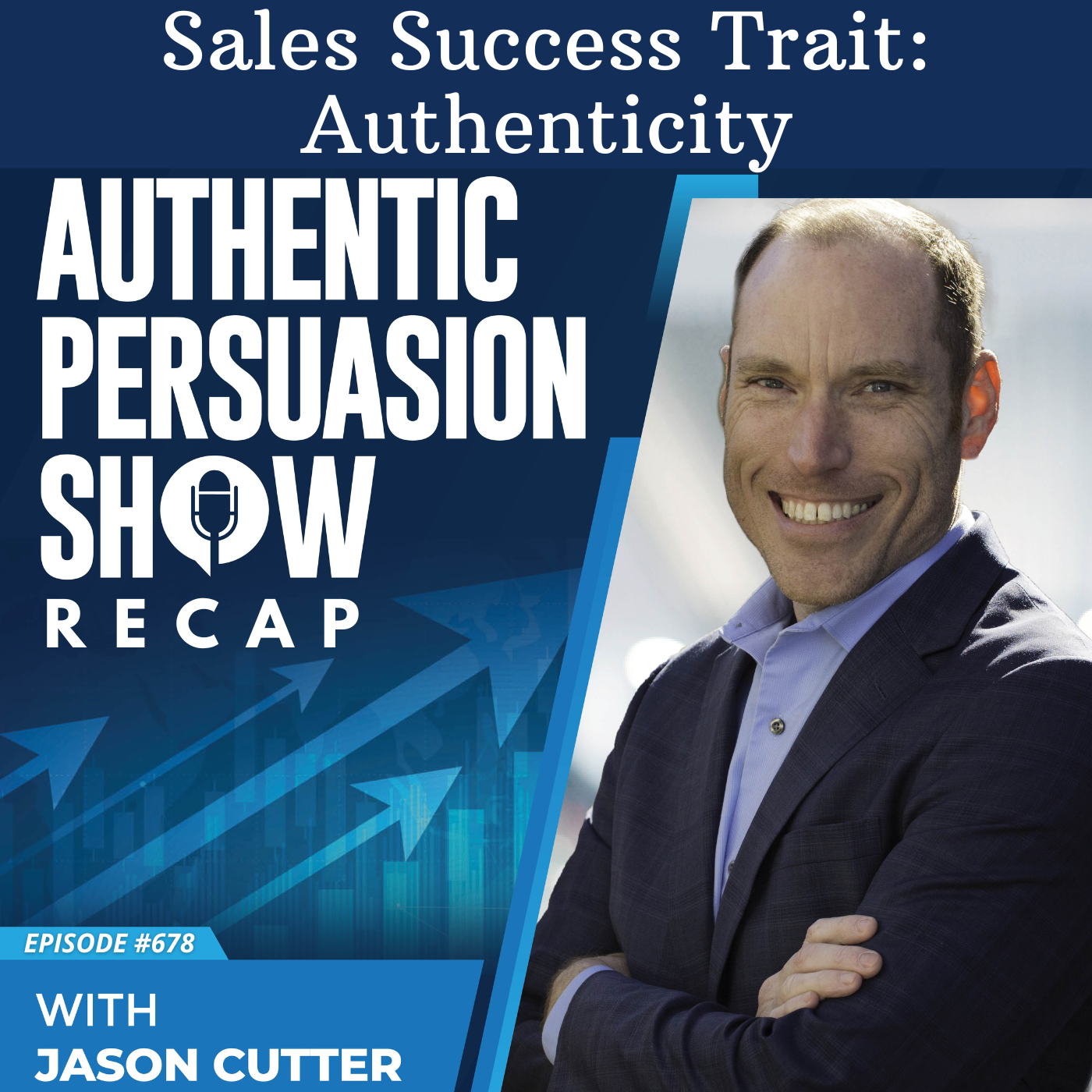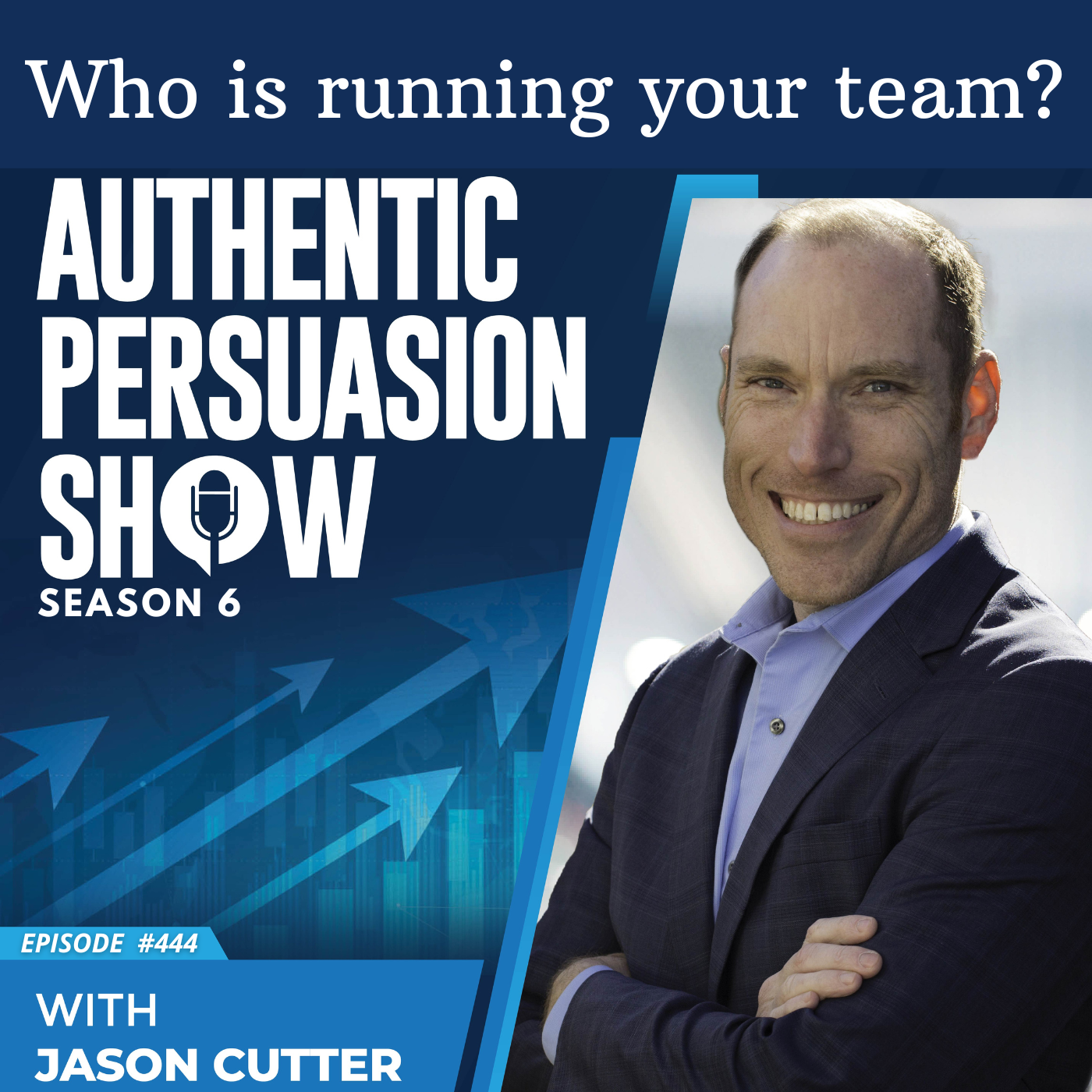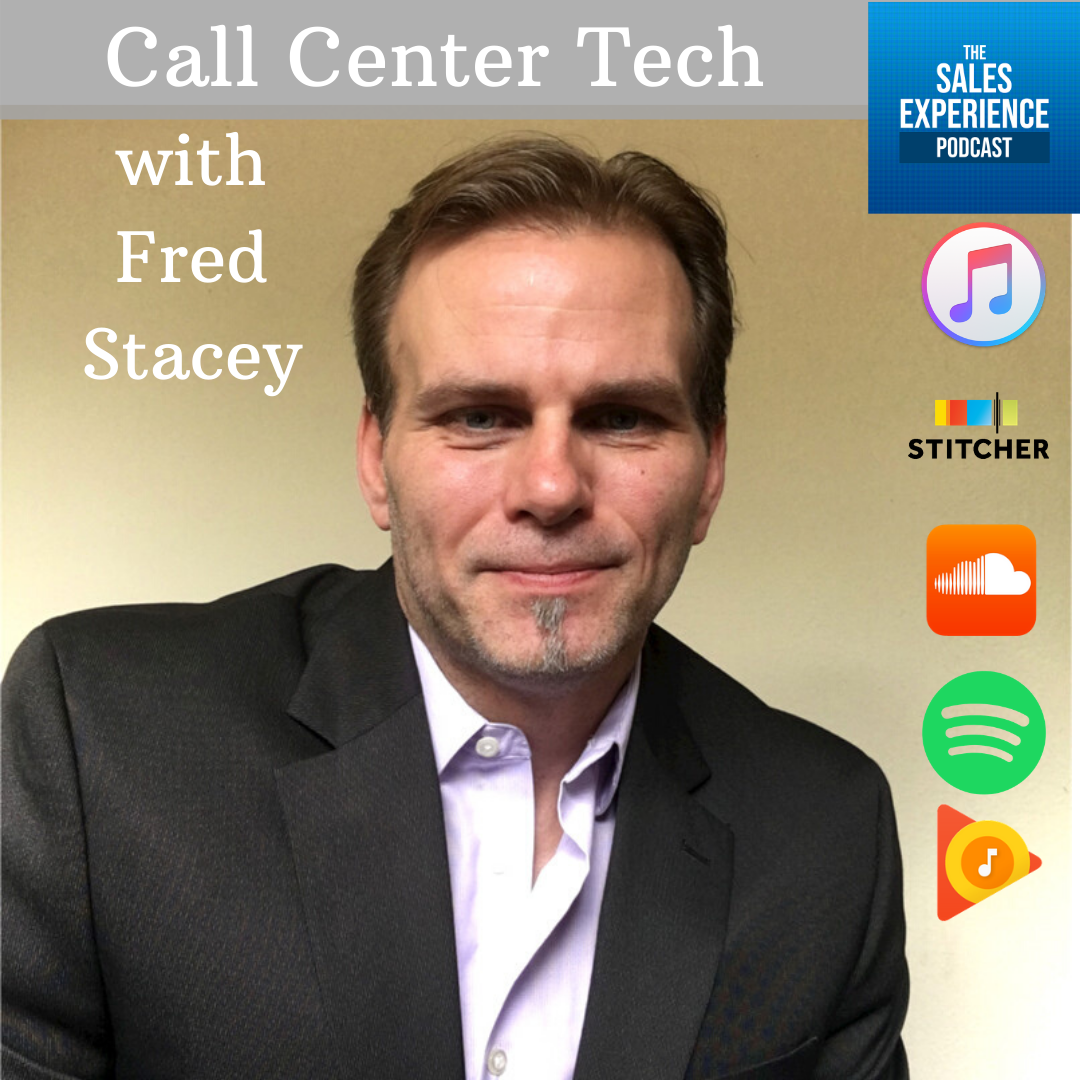Show Notes
Are you selling a technical product or service?
Do you struggle with being in the middle between your customer, engineer/product development, and marketing?
On this 4-part series, Ian Peterman joins me to talk about his experiences starting out as an engineer and moving into a consulting role. We talk about the challenges of technical-based sales and ensuring the best structure for success in moving prospects to customers.
In Part 1, Ian and I talk about:
- Engineers and Salespeople – can’t we all just get along?
- Don’t Field of Dreams your product
- Making sure the sales team is providing valuable feedback and suggestions
- Sales – being the bridge between customers and engineers/designers
Download The Power of Authentic Persuasion ebook
Enroll in the Authentic Persuasion Online Course
Connect with Jason on LinkedIn
Connect with Ian on LinkedIn
Ian’s Bio:
Ian is an amazing entrepreneur, business owner, and an amazing individual. Ian grew up surrounded by design, engineering, accounting, and entrepreneurial people. Ian always had the desire to work for himself. After working as an engineer and designer for over a decade within startups and companies like HP, Adidas, Robot, and Nike, Ian founded the Peterman Design Firm. The firm has been named one of the top design and branding firms of 2019 by DesignRush, Clutch, The Manifest and Visual Objects.
Ian has been in the branding world for 7 years now running two different design firms. Social media isn’t a have to, it’s a get to and it’s a huge opportunity for brands to engage with people at all stages of their relationship to offer education, build trust, and share value. When done right, it’s an avenue for being seen, well understood, and garnering powerful loyalty with your ideal clients and customers.
Ian’s Links:
Website: http://www.petermanfirm.com
Facebook: https://www.facebook.com/PetermanFirm/
LinkedIn: https://www.linkedin.com/company/petermanfirm
Instagram: https://www.instagram.com/petermanfirm/
Twitter: https://twitter.com/PetermanFirm
LinkedIn: https://www.linkedin.com/in/ianpeterman/
E196 – Transcript
Jason: Hi and welcome to the sales experience podcast. My name is Jason cutter. On today’s episode, I have Ian Peterman. He started his professional life in the world of engineering and design and for the last seven years has been running design firms and as he puts it, social media isn’t a half too. It’s a get to and it’s a huge opportunity for brands to engage with people at all stages of their relationship to offer education, build trust and share value. Ian, welcome to the sales experience podcast.
Ian: Thanks. Appreciate it Jason, and good to be here.
Jason: Yeah, so this is a sales related podcast. Anyone that listens to this knows I have a wide variety of guests that come on the show and all different things. It’s not a marketing show. However, and you and I probably will agree on this, there’s a ton of overlap, especially when it’s done right between the world of marketing and the world of sales, which is why I’m super excited to have you on the show and kind of talk about branding and marketing and how that relates and fits in.
Ian: Absolutely! It’s, get a surprise, a lot of people on how much marketing is a part of everything. You mentioned me being an engineering world and the engineer’s not understanding that marketing and sales is part of engineering too is a problem that I found. So yeah, it’s all interlaced quite heavily together.
Jason: Let’s talk about that specific cause I was thinking at one point, we might talk a bit about marketing, but let’s talk about engineers and sales because I have so many experiences, but I want to get your opinion first. How do you help bridge that gap? So for any sales leaders, sales managers, or even leaders of product development engineering groups, like how do you make those two play together?
Ian: A lot of work. It’s really a, it’s making sure that when you start a project out, uh, you know, so we’re talking about new product development or you know, updates to a product line. It’s making sure that that conversation starts with both being involved. And whenever it sits in just one, that’s when problems usually arise. So in my experience, some of the most successful products that I’ve ever worked on were actually started primarily by marketing. And then they involved engineering early on to say, can we actually even do the product that we want to do because it’s a bit of a dance or you go and you say, Oh, I’m going to develop a new product. And the head of engineering goes, yes, we can engineer that, but budget-wise we need to hit this mark and so it’s going to look like this now.
Ian: And then marketing looks at it six months later and hundred thousands of dollars later they go, Oh well nobody wants that. That looks ugly. You know, it doesn’t fit. It doesn’t fit the market that we’re really going after. And so to avoid that, it’s making sure that you’re, you have that conversation with your sales reps, you have it with your marketing, you have your engineer, at least it’s the one on board to look at it and say, here are some issues that might happen when you try to launch that product. And it’s that early communication early on often is usually what saves you down the road in finding yourself with a product that doesn’t actually fit the needs.
Jason: So you’re saying the field of dreams model isn’t the right way to go, just build it and they will come?
Ian: Both. So it’s, it always has to be a combination. You’re going to have a, you should always have that way out there concepts that you know my be a little too far out there, but then you bring it back to reality from two points. Perspective one is sales. I guess we actually need to go market and make sure of their market for us or if you have products just talking to your sales rep, what are the products that are selling really well right now? What is doing well and how do we make a product that fills a hole? Because a lot of the times in my experience when you talk to a sales team, they can tell you exactly what their customers are asking them for.
Ian: And so when you’re trying to develop a new product or grow your line, that should be the first place you go to is you go to your sales team and you say, well what are they asking you for? What are your customers when you try to sell our product, what is their first answer? Does it have this feature and you have just tell them no. What is that and that is a good point to start when you already have that kind of information is actually using your sales team as a market research because they are, they should know their customers and what they actually want.
Jason: But let me play devil’s advocate on the side of engineers and business owners who I know this happens to a lot, which is feature creep and product creep as far as like cause salespeople and because this is where all of my experience has been, salespeople will always want every bell and whistle. They’ll always want to make every customer happy. They will always want to make sure if anyone asks for it, they’re going to say yes. They’re going to think it’s important. Everything is urgent, everything is necessary. Yet. However, from a business side and from a feature side, whether it’s a product or service, you know, whether it’s a SAS solution, like whatever it is, what is like the limit or how do you keep that under control or you know, what do you tell salespeople about that process?
Ian: Well, the way I would typically handle it is, you know, you get the information from the salespeople, but they shouldn’t be the ones making the decision. So it’s, I prefer being able to look at the data, you know, get it from the salespeople, get their lists, but use it as empirical data. You know, if you have 10 sales people and there are a thousand, whatever it is, you have X amount of things that they ask them and you say, well what about these features? You can get a feel for how many customers are actually asking for it and then use that information to decide whether it’s hit a certain point of interest. You know, it’s like feature requests on a Zass by farms primarily. It’s so easy to, you know, ask for those. So those kinds of surveys, but when you have a sales team, having them ask a little more detailed questions can get you a little more information because it’s not always just, Oh I want to feature.
Ian: They might say that, but if you can have your sales team ask a little bit more detailed questions on the why do you need that feature? Then that can help you as a business owner decide do I actually need to do it? Or maybe another feature that your sales team just isn’t explaining well that can accomplish that or maybe it’s not an entirely new feature. Maybe it’s a sub feature on a sub menu of your program that that is all you need to add in. Now you have the function I that actually solves the problem that the customer has or believes they need fixed with the platform.
Jason: Yeah, and I think that’s a really good point and I just, all the sales reps and managers out there listening to this, I think that’s very valid and very important is to keep in mind like if your customers or prospects, because this is usually where I see it come in as prospects are asking for something. Sales reps want to close the deal, don’t want to lose a deal because they’re missing a feature. The first stage is asking lots of questions of that prospect, what it is they want. The second part is being educated as a sales rep and going to management, going to ownership. Who are the development team? Whoever, depending on how big your organization, whoever’s involved and understanding if maybe that is there, like you’re saying, and maybe it’s just not being used completely or if it is something you’d be added.
Jason: But don’t, you know as I’m hearing you talk, I’m thinking about if you were to let a kid pick the shopping list for the grocery store and then let them just everything on the list, just go. Then you know, they’re going to be eating lucky charms for breakfast, lunch, and dinner and you know, and Mac and cheese and ice cream. And so, you know, there’s things that, you know, obviously there’s limits and if you’re a salesperson, just get lots of detail and then you know, move that value up the chain. And if it’s a valid feature from what I’ve seen, then it’s something you’re gonna want to put into the product, the service, whatever it is.
Ian: Well and I think that’s where the conversation between engineering and sales needs to happen too, is that sales might have a feature that they want added or a new product and engineering might look at it and say, yeah, that’s, that would take us, you know, 30 minutes to add. Do you want to add it right now? So having on some level deciding what inside of your engineering team is an acceptable amount of, you know, extra feature work or the side piece of that, you know, things that you can just quickly add or you can quickly do. And in my experience with a lot of physical product development is when you work with the sales engineers for let’s say pneumatic pumps, you go to them with your need of this is what I need to do with it.
Ian: And then they actually help figure out how to use their product to fit that need. And so depending on what level, you know, if you’re doing a product that’s going to million people or hundreds of thousands of people and it’s not really customizable and that’s not the experience and that that you can’t do that. But on larger, let’s say enterprise level SAS or you know, custom physical products, things like that, having their engineering experience inside of your sales team will allow them to actually modify the product a little bit to meet the needs without necessarily redoing tooling. So, you know, when I’ve worked with like pneumatic pumps and things like that, they don’t retool their entire line for me just to make a new thing. But they configure products to work for certain situation or provide feedback on how to make the whole product work with their product. And so that having that sales engineer is very helpful and depending on what your industry is obviously.
Jason: So let’s talk about the sales side of it. Right? So there’s the engineering and the working together and I’ve been a part of organizations, sales and non-sales related where engineers are making products, making services, making applications without any thought of how the customer actually uses them, how they’re actually sold, how a normal human would use that item. Again, whether it’s a physical product or a widget, it doesn’t matter like I’ve seen the whole range but let’s talk about the sales side. So what about selling those kinds of things. So selling something technical product or service without being technical or being a technical sales person or you know, getting into the weeds like you know, what have you found in your experience when kind of merging those two or attacking a technical sale without technical sales people,
Ian: It can get really messy really quickly and it really depends on the sales person and what their approach is. And the best solution that I’ve found is that when you’re trying to sell something really technical and you have non technical sales, is that you let the salesperson do the sales part and you make sure that an engineering person is backing them for information and you just have the sales person control the conversation in terms of you know, asking questions, discovery, things like that. And then always going, alright, I’m going to talk to my engineer. And that way they can build the relationship part that the engineer doesn’t handle and they can basically become a bridge between engineering and the customer. And when that happens, you know you don’t need a ton of technical expertise. What you need is listening skills. So you listened to the customer and you listened to the engineer and you bring the information together and let that process guide you. And when that happens and the focus isn’t so much on trying to, it does lengthen the sales process a little bit because you are going back and forth between two information sources. But that’s been the most successful in my experience of non-engineering sales.
Jason: Alright, everybody. Thanks for listening. This was part one of my conversation with Ian Peterman. He and I are going to continue talking. As you’ll hear in the rest of this mini series set of episodes, make sure to check out his information, his links prior to the final show, part four. You can go to cutterconsultinggroup.com where you can find the transcript, show notes and his links, and as always, keep in mind that everything in life is sales and people remember the experience you gave them.
![[E196] Technical Sales Mastery with Ian Peterman – Part 1 of 4](https://episodes.castos.com/salesexperiencepodcast/images/Ian-Peterman-Cover-Image-1.png)


